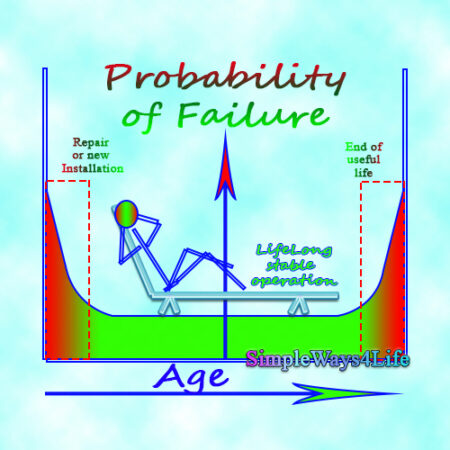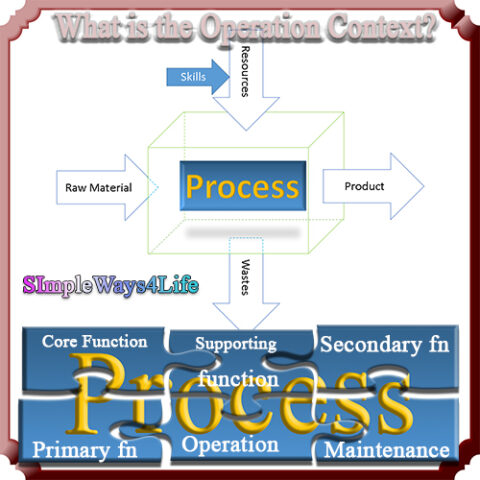Proactivity is usually mouth watering when you speak about your approach in maintenance management. However, proactivity is a nice trap on the long term. The business results of your maintenance business unit might not be that promising compared to the lengthy maintenance program you are adopting. The first indicator for any business unit is usually the cost. The second one is is the smooth operation. The final one which was in focus with the ISO9001last upgrade , is the alignment to company goals. That’s why RCM (Reliability -centered maintenance) focuses on a nice question. “Is it worth making?”. Whether you are reviewing your maintenance tasks or you are adding a new punch of them. Ask your self “Is it worth doing?”.
What does Proactivity mean?
Literally at Merriam-Webster it means: “acting in anticipation of future problems, needs, or changes”. Let us reflect this to the maintenance world which is part of life.

In the Maintenance world Proactivity means making a repair or a replacement in anticipation of future failure due to aging or condition change. The simple equipment follow the bathtub curve above. Once the equipment had survived the premature failures due to repair or new installation, it will continue to run for a definite life time. This life time would be mainly counted in hours or operation numbers. That’s one side of the proactivity set of mind.
The other side of proactivity includes cyclic or continuous condition monitoring of the equipment. There are many forms for this checking. Its simplest form is visual checking. The sophistication of the condition monitoring process grows as the importance and complexity of the equipment grows. However, still many equipment fail in spite of the rigid preventive maintenance schedule or the condition monitoring cycles.
Does Proactivity pay off?
Actually It depends on the targets of the maintenance program. If solely; No equipment failure; is the target, proactivity pays off well. Otherwise if cost, available man-hours or available maintenance hours are an issue, you need to rationalize proactivity tasks. How? let’s walk through some scenarios. When the maintenance manual states that a part of the equipment needs replacement every 3 month. Initially you will make your plan to change it on the last repair day before the 3 month end. Suppose that in one of the machines of that same type this part failed after 2 month. Do not rush to change the schedule of this part replacement for all the machines to be before 2 month. Why?
It may fail in other machine after 1 month. What you will do? Either you will decrease the cycle again or you will add some inspection for this part. Both raises your cost and manhours need. However, you can find the way out of this trap by a little pit of analysis for each failure. This analysis needs some data collection by the failure repair team. The part might by originally defective, not supplied according to spec. Or the failure might had originated from wrong operation of the machine or induced by other part vibrating or leaking. Some examples ere introduced in a previous chat: 3- Reliability made easy – Why Failure prevention is not the main RCM focus?
We are not talking about extending the manufacturer scheduled recommendations based on your team creative solutions. Because this option is not valid for every part. It depends on the local regulations, the equipment warranty and the failure consequences as we shall them in details later in this chat.
The Proactivity side effects
Well, Proactivity has no side effects unless it is manipulated. Manipulation here comes in the sense of pretending to be doing a great job. While actually that who manipulates tends to play a note that was previously admired. That’s regardless of how efficient the maintenance work yield is.
Regardless it is ignorant or manipulation that runs the show, blind proactivity continue to stack tasks and consume budget for manpower and spares and even unnecessary upgrades while trying to look like the best-in-class.
How to know if a task does worth doing it?
That’s how Reliability in its simple form or RCM (Reliability-centered Maintenance) in its full length analysis and application rationalizes the proactivity.
A proactive task is worth doing if it reduces the consequences of the associated failure mode to an extent that justifies the direct and indirect costs of doing the task.
John Moubray, RCM II
Even though, the definition seems easy, it takes some steps to reach the worthiness conclusion. The worthiness of the task has two folds. The first one is the cost worthiness and the second one is the technical feasibility of the task itself. Technical feasibility will be discussed in a separate chat. For any task to be cost worthy; The direct costs of parts, tools and manpower and indirect costs of production stoppage if needed over a period of time should not exceed the cost of the failure consequences.
Failure consequence to justify the additional task worthiness:
So first, we need to know the consequences of the failure. Some consequences even incur indirect cost but are ranked at the top even before it is monetized. Those consequences include the breach of safety, environment and reputation.
TThose consequence can come on different levels. On the top is any failure that breaches the safety or the environment. Followed by those that affects the product quality and customer services. Then, come the failures that affects the production volume and the production cost. The effect on the production cost can be evident as scrapped products or lost raw material or indirect as increased fuel consumption. lastly comes the failures that might induce other failures. Example of those failures are the leakages that might cause fire or contaminations in other equipment. Also, comes in this category the work arounds that causes failures in other equipment due to using them outside their design limits. As overusing an overhead crane or a lifting facility to overcome the stopped one.
All those reasons in the bottom line incorporates additional costs to the equipment. The only failure that has no additional cost other than its repair cost is the failure of an equipment that has a standby one. It only consumes the repair cost that would be incurred anyhow even if the failure is predictively caught before it occurs.
If you feel you need help with any of these ideas we discussed, request a Management Consultancy or Coaching Services From our Store







